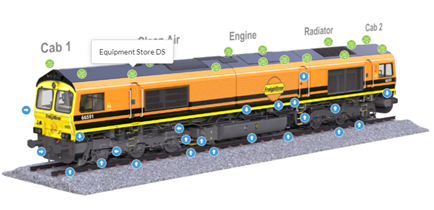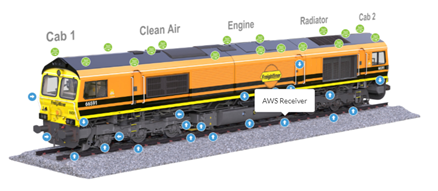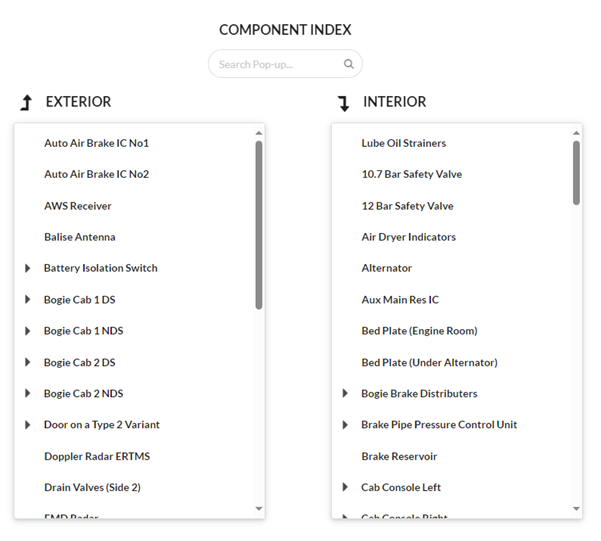As featured in New Signal Newsletter
The implementation of the European Train Control System (ETCS) via the East Coast Digital Programme (ECDP) will enable significant benefits for the UK rail network. These include improvements to safety, reliability and the environment. Besides the desired outcomes, Programmes of this nature also enabling the introduction of new training technology and ideas. One notable piece of technology currently under development is the interactive Virtual Train (iVT), by 5 Lamps, spearheaded by ERTMS Operations Specialist Jonathan Ellerbeck. The iVT serves as a training support tool for operational staff, offering an experience where users can virtually ‘walk through’ a Class 66V Freightliner locomotive.
During this walk-through, learners will be able to familiarise themselves with the new ETCS components being fitted to Freightliner’s fleet, which will enable the vehicle to operate on ETCS fitted railway. These components, highlighted by blue interactive tabs, expand when clicked to reveal more information such as their function, troubleshooting procedures, and any relevant documentation.

Green tabs, on the other hand, help navigate around the locomotive by providing names of various areas inside and outside the locomotive. What distinguishes this software is the exceptional quality and thoroughness of the imagery. By incorporating schematic drawings, 3D laser scans, photos, and videos, images of the iVT can sometimes resemble actual photography.


During the introduction of ETCS to Freightliner, Train Drivers will attend modular training, one of which will focus on the introduction of ETCS components operating under the current conventional railway signalling system. It is after this course that learners will be formally introduced to the iVT as a takeaway referencing tool for both refreshing and on the job support. Additionally, because the app is available offline, it can be used in out of course situations as a reference guide regardless of internet access.

“In the future should a driver experience an ETCS related fault, they will do as they do now and ring for engineering support. The person on the phone may ask them to check a particular component. The driver will be able to search for the component in the index and be shown where it exists on the train and what fault-finding measures to follow.” Said Jonathan Ellerbeck, “It bridges gaps in communication and will hopefully make these situations more streamlined.”
Many Freightliner drivers are competent on the operation of two or more Classes of locomotive. This is where the purpose of the iVT becomes the most useful. Once ETCS fitment designs of additional traction reach a level of maturity, they will be incorporated into the application. This will allow drivers to familiarise themselves with the exact locations of the same ETCS components on those classes of locomotive at points when a fitted locomotive is not readily available.
The iVT will not only be used for training drivers; Freightliner’s ERTMS Training Maintenance Team is currently in discussion with 5 Lamps regarding the potential adaptation of this technology for engineering purposes. This adaptation could involve incorporating 3D renderings of components with interactive features and providing more detailed information on the processes which make the components work and specific instructions regarding maintenance.
It is evident that this tool has versatile applications within Freightliner and the freight industry. Developed as part of the East Coast Digital Programme, this work will be accessible to other ECDP partners to support their ETCS initiatives.

